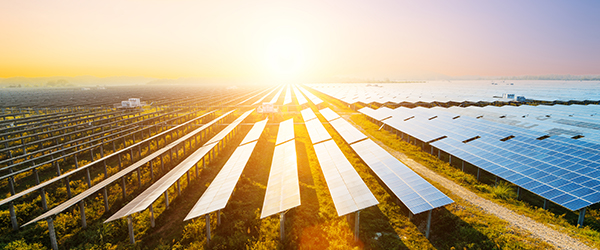How Long do Solar Panels Last?

If you’re considering an investment in solar panels for your home, it’s likely you’re wondering how long that investment might last. The industry term for solar panel lifespan is the “Degradation Rate,” which describes the output that all solar panels experience over time.
Solar cells degrade due to unavoidable circumstances, like UV exposure and weather cycles. When manufacturers began to realize that degradation rates were a problem, they improved their technology. However, solar panels created before this realization didn’t account for degradation rates and may be more susceptible to wear and tear.
Photovoltaic (PV) modules typically come with 20-year warranties that guarantee the panels will produce at least 80 percent of the rated power for 20 years. The general rule of thumb is that panels degrade by about 1 percent every year. An investigation was conducted by the National Renewable Energy Laboratory (NREL) to determine if the 1 percent of degradation rule used by manufacturers was accurate or not.
The NREL analyzed the long-term degradation rate of a variety of PV solar panels, leveraging research from the past 40 years. Research found that the 1 percent rule was pessimistic for panels made prior to 2000, and today’s panels, equipped with better technology and improved manufacturing, have better stamina. The degradation rate is actually less than 0.5 percent for panels made before 2000, and less than 0.4 percent for panels made after 2000. A panel manufactured today should produce 92 percent of its original power after 20 years, which is quite a bit higher than the 80 percent estimated by the 1 percent rule.
With the increased technology, new solar panels are expected to last for 25-30 years. After that time period, solar panels can drastically lose their efficiency.
Improving Solar Panel Lifespans
In order to extend solar panel lifespans, we must learn why they degrade. Researchers at Case Western Reserve University have used machine learning to take crucial steps toward increasing the lifespan of solar panels and potentially lowering solar energy costs for manufacturers and consumers.
Machine learning allows researchers to quickly and accurately read thousands of images of solar cells as they break down and fail over time. Until now, solar panel manufacturers had to rely primarily on single, static photos of the PV cells after they had failed. Allowing researchers to see how and where the PV cells have failed will be the key to advancing solar panel diagnostics and accurately predicting future failures.
Another initiative underway is increasing the lifespan of solar inverters. The solar inverters on panels usually last between 10-12 years and typically need replacing at least once over the panel’s lifetime. The power inverters are crucial for safe and efficient operation of solar panels. Extending the lifetime can have significant advantages to the cost and function of a solar system.
The U.S. Department of Energy Solar Energy Technology Offices are exploring power electronic concepts and device designs for solar that could extend power electronics’ lifetimes and significantly reduce a solar energy system’s levelized cost of energy. This could help the solar industry reach $0.03 per kilowatt hour by 2030.
Join the Future of Solar Energy
With improved technology and longevity of solar panels, a solar PV system for your home is a great option for reducing your energy costs and reducing your carbon footprint. Our residential solar program is growing each day and we want you to be part of it!